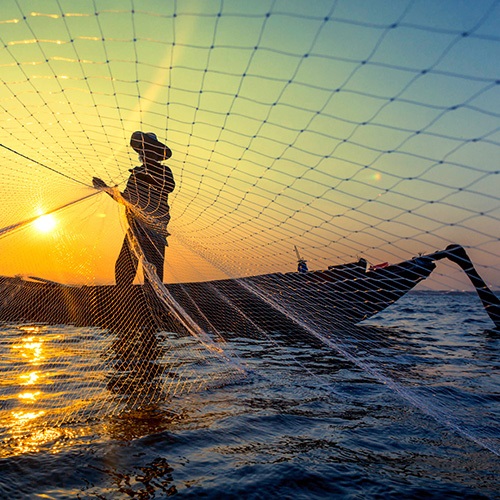The European horsemeat scandal of 2013 rocked consumer confidence and saw many businesses look very hard at their supply chains.
The causes of seafood fraud
Shockingly, around a third of all seafood traded globally is not what it says it is. There are two reasons for this: intentional and unintentional. Whether it’s a genuine mistake or deliberately cutting costs for profit this is a major problem. Why does seafood fraud matter?Before I go in to the three major implications let me start by saying: Our oceans are at risk, facing a triple threat of climate change, overfishing and pollution. With two thirds of fish populations overfished, we are on a mission to end this using science and the power of partnerships. It’s important that we reverse this decline to secure the livelihoods of the communities that depend on fishing and avoid putting pressure on our protein demand to be land based. Here’s to planting more trees, not cutting them down.
The problem with seafood fraud
Inadvertently buying that ‘fake hake’ is a problem because:Firstly, the fish can be illegal or unreported. This means it's contributing to the overfishing problem because we don’t know that fish has been taken from the ocean. It could also mean endangered species are being caught and further threatened.
Secondly, it undermines the hard work of honest fisher men and women, especially those working even harder to be sustainable and ensure they can fish forever and protect their way of life.
Finally, it can be bad for your health. A few years ago, a friend of mine and I were in a restaurant. She’s severely allergic to haddock and asked the waiter if their cod was cod. The waiter couldn’t confirm, and she chose something else - things could have been a lot worse.
What’s the seafood fraud situation in Australia and New Zealand?
With almost a third of all fish traded globally is not what it is says it is, what does that mean here in Australia and New Zealand? Simply put we don’t know. Some may have heard reports of a near 10% mislabelling rate in Sydney Fish Market. Certainly, there’s no definitive research available yet to give us a more precise read. Right now, we trust brands and retailers to do the right thing and have the systems in place. Right down to that independent restaurant or cafe.What can we do to combat seafood fraud?
What we know is that no government legislation in the world has managed to eradicate this problem. However, through a simple and practical five step process, organisations using the MSC Chain of Custody Standard have almost eliminated this problem. We’ve even done DNA testing to prove time and time again that in over 99% of cases, the MSC’s traceability system works.The five steps to eliminating seafood fraud
My colleague Alex recently presented as a last-minute stand-in for me at the SAI Global APAC Food Safety Conference in Sydney and outlined the following steps from the MSC’s Chain of Custody Standard.Step 1: purchase from certified suppliers
Step 2: always keep the fish identifiable
Step 3: separate from non-certified seafood at every step
Step 4: keep accurate records
Step 5: have good systems and training in place
Thousands of organisations selling over 36,000 MSC labelled products in over 100 countries are already doing this. There are many leaders for a living ocean with action leadership from McDonalds to Hilton to Coles to name a few. It requires training, an audit and ongoing surveillance. To check it works we conduct random trace backs and DNA testing.
Consumers on the other hand just need to do one thing: look for the blue fish tick label.
How can we all play a role in ending overfishing?
When you see that blue fish tick label on fish products in ALDI, on a tin of John West tuna, at the restaurant in IKEA or at the Fish Shoppe in South Melbourne Fish Market, you can be sure that it’s been handled with care and can be traced back to a sustainable source.Everyone has the power to help end overfishing and restore ocean health. As a consumer look for the label and ask questions. As a business leader, look in to credible certification schemes and build this in to your procurement policies.
You can connect with Anne at @AnneGabrielOz or by emailing Anne.Gabriel@msc.org.



